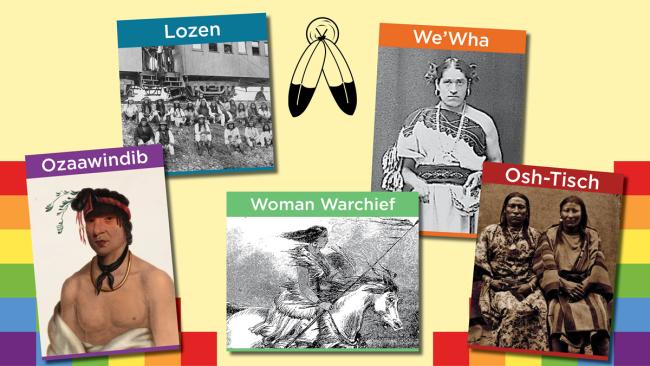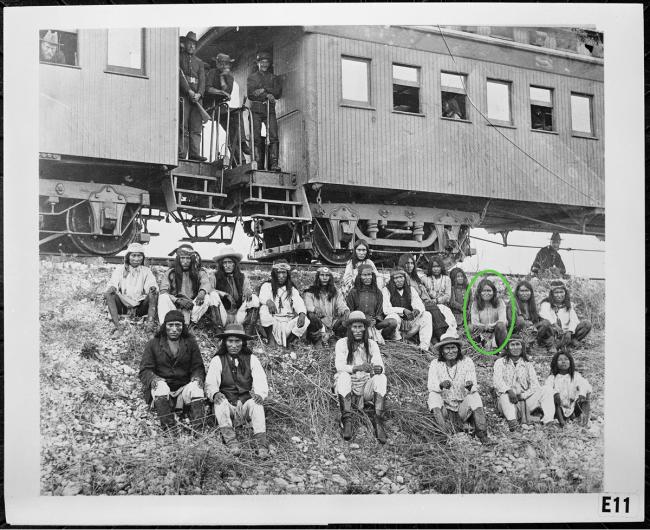
1. Ozaawindib, Late 18th Century,Ojibwe, Chippewa – Ozaawindib, also known as Yellow Head, was an honored Two-Spirit warrior. Read an essay by Niigaan Sinclair in Love Beyond Body, Space and Time: An Indigenous LGBT Sci-Fi Anthology titled Returning to Ourselves: Two-Spirit Futures and the Now discussing two-spirit history in which Ozaawindib is mentioned.
2. Lozen, 1840-1889, Chihenne Chiricahua Apache — Lozen was a renowned warrior and medicine woman who identified as a man. Read Warrior Woman: The Story of Lozen, Apache Warrior and Shaman by Peter Aleshire.

Lozen is pictured here with Chihenne Chiricahua Apache Prisoners, including Geronimo. Looking at the image from the bottom up, Lozen is in the second row. They are the third person in from the right. This image is from 1886 and provided by the National Archives at College Park.
3. Woman Warchief, 1850, Algonquin, Crow — Woman Warchief was a Two-Spirit hero drawn to “men’s” tribal roles; was a leader in marksmanship and hunting competition; and had four wives. Woman Warchief is featured in the book Butch Heroes by Ria Brodell.
4. We’Wha, 1849-1896, Zuni — We’Wha was a healer, craftswoman, and caretaker who traveled to D.C. in 1886 as a Zuni representative. Featured in the book Queer as All Get Out: 10 People Who’ve Inspired Me by Shelby Criswell, No Way, They Were Gay? by Lee Wind and Rainbow Revolutionaries by Sarah Prager.
5. Osh-Tisch, 1870s, Crow — Osh-Tisch was assigned male at birth but lived as a woman during peacetime and as a third gender in war. They fought in war dressed as a man. They are featured in Rejected Princesses: Tales of History’s Boldest Heroines, Hellions, and Heretics by Jason Porath.